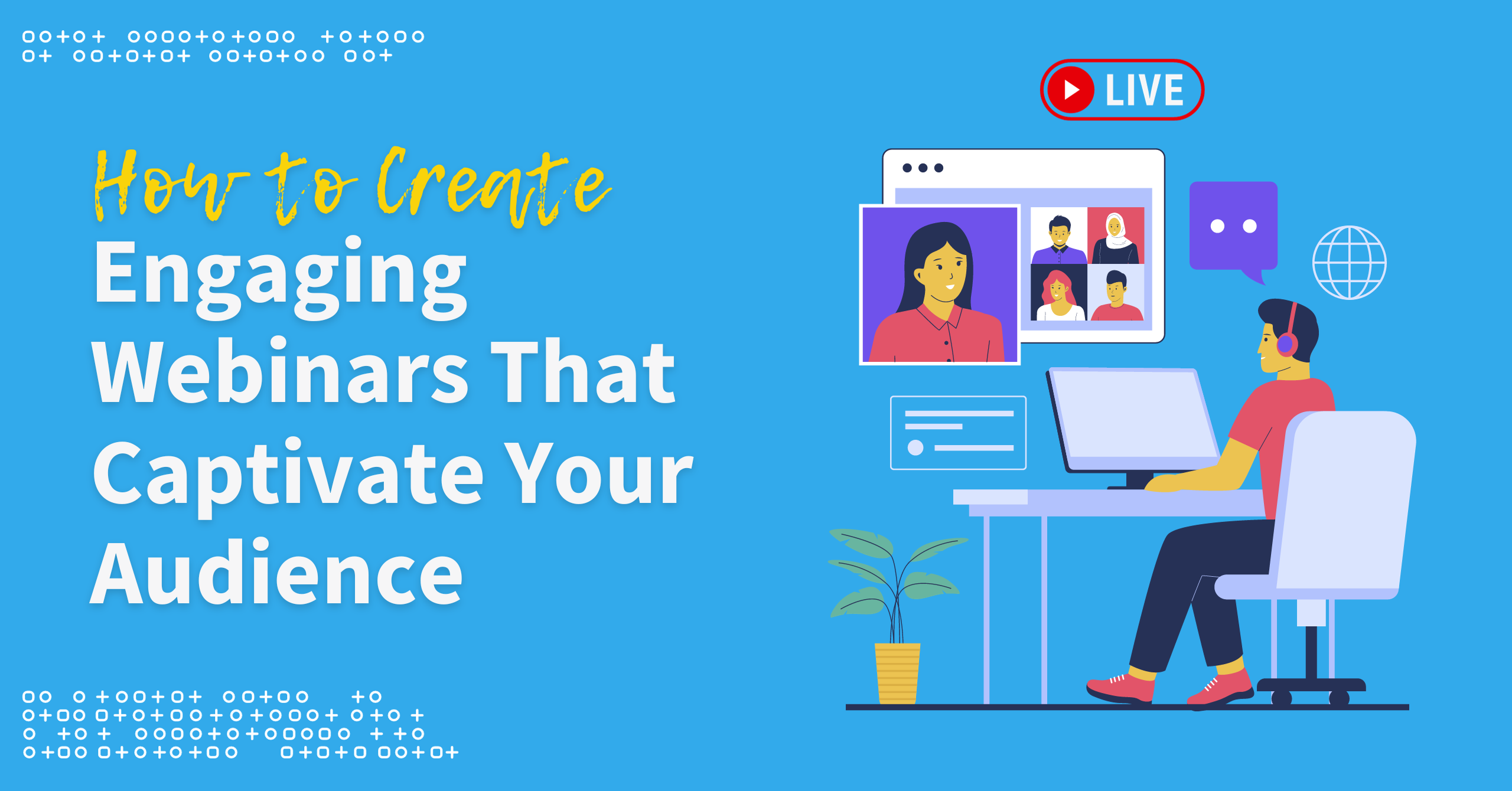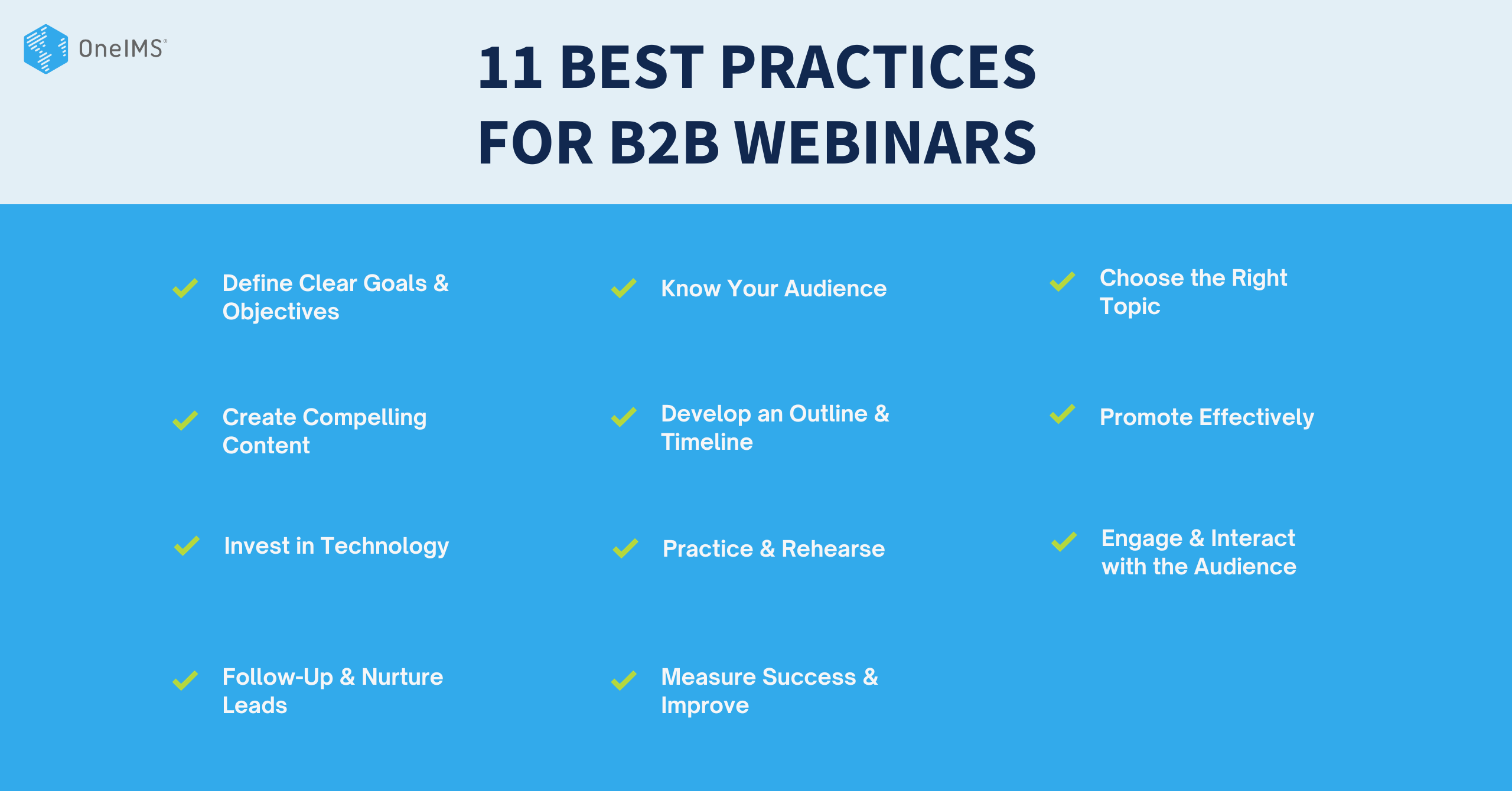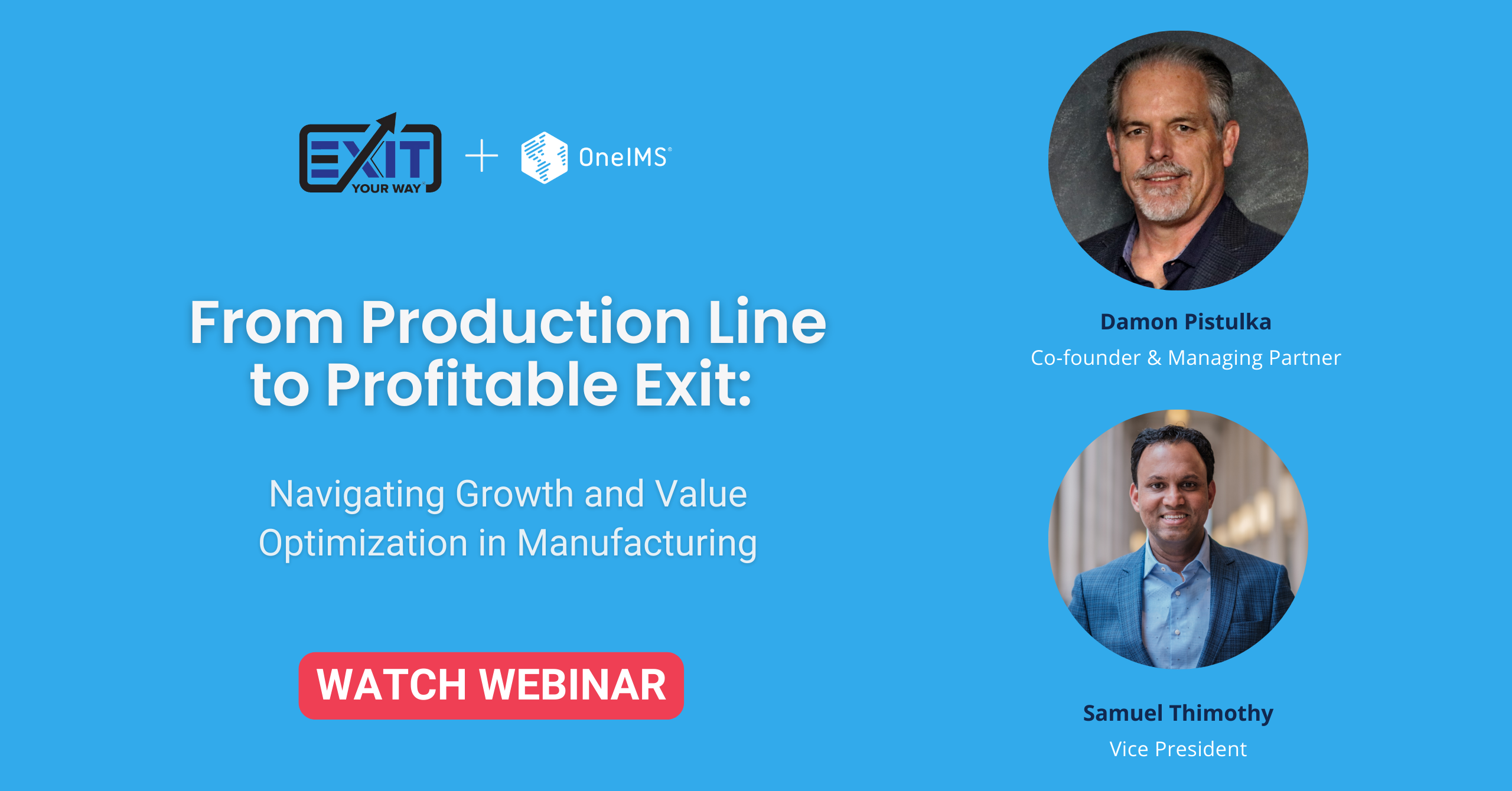If you spend any amount of time online, chances are you’ve seen—or at least have been invited to—a webinar. These web-based seminars (“web-based” + “seminar” = “webinar”) have certainly changed since their origins in the early days of internet technology, but the core remains the same: They are used across industries as an avenue for learning, networking, engaging, and sharing.
And it’s no different in today’s business-to-business (B2B) landscape, as webinars are a powerful way for B2B brands to reach prospects and connect with their target audience.
Webinars continue to be increasingly popular marketing distribution channels among B2B businesses thanks to their reach, scalability, and cost-effectiveness. However, to truly connect with modern buyers, these assets can’t just be thrown together at the last minute. A successful B2B webinar must start with a strong, well-researched, and data-driven webinar strategy to maximize its potential.
Creating engaging webinars is a highly effective marketing activity for modern B2B brands. By following some webinar best practices and using a proven webinar strategy, you can set your business up for success.
The Basics of B2B Webinar Marketing
B2B webinars are typically hosted by industry experts or professionals in a certain field and focus on B2B-related topics. These marketing assets are usually presented live and then recorded so they can be made available on-demand, ensuring they are accessible by anyone who wants to view them. This approach is a cost-efficient, proven way to reach a large—even global—audience at scale.
There are several types of webinars that are prevalent among B2B brands. Depending on the goals you want to accomplish with your B2B webinar strategy, you may employ a variety of formats across different webinars or stick with a series of the same type of webinar each time.
Customer Success Stories
Webinars centered on customer success stories tell the story of how a customer used your B2B company’s services or products to solve their problems or address their pain points. This webinar format not only develops interest in your brand’s solutions but also showcases your commitment to customer satisfaction.
How-to Workshops
Online how-to workshops are a key method of engaging with your target audience. By teaching attendees how to accomplish a complex task, project, or goal and breaking down the steps to ensure their success, this webinar format ensures your ideal customers will see your B2B brand as a leader and expert source.
Industry Updates
Industry-based webinars help establish your B2B business as a trustworthy source of information in your industry. These webinars are often led by a panel of guest speakers, such as influencers or thought leaders, and keep attendees up to date on the latest industry news, trends, updates, changes, and developments.
Live Q&A Sessions
What better way to entice audiences and forge connections with prospects than a live Q&A? This type of B2B webinar allows participants to access expert advice on a particular topic, learn from the answers to other audience members’ questions, and get valuable information directly from the source.
Product Demonstrations
Product demonstration webinars are a great way to promote your products, especially if your B2B brand offers products that are more complex. These webinars are a chance to drum up interest in your products, answer consumer questions, and show attendees how they can benefit from making a purchase.
Do Webinars Work for B2B?
Webinars have been around since before the internet as we know it today. Are they still a powerful marketing strategy for B2B companies?
Yes!
Let’s see what the numbers say: In a 2023 study, 51% of B2B marketers ranked webinars as the most effective distribution channel, closely following in-person events (56%) and surpassing other established channels like organic social media platforms (44%), blogs (40%), and email newsletters (39%). Additionally, the same study revealed that 33% of B2B marketers plan to increase their webinar budgets in 2024.
It’s no surprise that webinars continue to be popular in the B2B space. They are highly effective tools for generating leads, promoting products or services, establishing brands as industry leaders, and driving sales.
B2B webinars are also one of the most cost-effective ways to reach a wide audience and market at scale. Modern webinar platforms offer advanced data collection and analysis as well as interactive elements that make it easier than ever to host highly successful webinars for your target audience.
11 Best Practices for B2B Webinars
Whether you are hosting your first B2B webinar or looking to create a webinar series for your business, the secret to webinar success is planning and practice. Once you get the hang of things, you’ll start to see the results of your work—a more engaged audience, better leads, increased brand awareness, and deeper relationships with prospects.
Follow these webinar best practices to develop your own strategy.
1. Define Clear Goals & Objectives
Before planning a B2B webinar, you must define clear goals (the outcomes you want to achieve) and objectives (the actual steps you will take to achieve your goals). Otherwise, your webinar will have no focus, direction, or purpose.
Do you want to generate more leads? Move existing leads further down the sales funnel? Grow your subscriber list? Increase conversion rates? Close a certain number of deals? Establish a partnership with industry influencers?
Whatever your goal, create a list of actions you will take to accomplish them.
Hint: Identify SMART (specific, measurable, achievable, relevant, time-bound) goals to ensure your webinar is on the right track.
2. Know Your Audience
Who are you trying to reach? What are their problems, pain points, and goals? How will your webinar solve their problems or help them achieve their goals?
When you know your audience, you can better plan relevant and engaging webinars that will improve their lives and encourage their attendance. Consult your buyer personas and ideal customer profile (ICPs), conduct audience research, and meet with your B2B marketing team to plan a webinar that is laser-focused on the wants and needs of your target prospects.
The good news? If you design a webinar with a specific audience in mind, they will be more likely to register and attend.
3. Choose the Right Topic
You have a limited amount of time to spend with your webinar audience—and they have a limited amount of attention to share with you. Therefore, you must choose a topic that is relevant, interesting, engaging, and actionable that can also be covered in an hour or less.
Ideally, the topic will solve a problem or address a pain point for your attendees. Consider what you want your audience to gain from your webinar that they can then put into action in their own businesses.
Be as specific as possible to ensure you stay focused and can effectively promote your webinar.
4. Create Compelling Content
Interesting, compelling content will not only give your audience a reason to attend but also keep them hooked throughout the event. Visually engaging, value-added content is the foundation of a successful webinar and can take many forms:
- Share a white paper not available anywhere else
- Present a preview of a new product or cutting-edge industry research
- Offer exclusive networking opportunities
- Host a live Q&A session with experts
- Run a contest for attendees
Create a branded experience that draws attention and, most importantly, provides value to your audience.
5. Develop an Outline & Timeline
The average viewing time for webinars is 56 minutes, making the ideal webinar length 60 minutes, which includes a 10–15 minute Q&A session. That means you have 45–50 minutes to hook your audience and keep them engaged.
Every webinar should start with an attention-grabbing introduction and end with a strong conclusion. Think of how you can incorporate visuals and interactive elements while keeping content short and sweet.
The goal is to craft a compelling storyline for your webinar.
6. Promote Effectively
How do you get people to attend your webinar? Send a formal invitation via email, leverage your existing social media profiles, add information about the webinar to your company website, include event info in your upcoming newsletters—use your most successful avenues to solicit interest in your upcoming webinar. Have the webinar host and any guest speakers create teaser clips that you can share on social media, and consider partnering with industry influencers to promote your event.
Regardless of the channels you use, each promotion should include a clear call-to-action (CTA), such as “register now,” “claim your spot,” or “save your seat today.” Additionally, link to a unique landing page where people can sign up for the event.
And remember, as part of your promotion plan, send at least two reminder emails, the first a day or two before the event and the second an hour before the webinar starts.
7. Invest in Technology
You need a reliable webinar platform to host your event. Make sure the platform you choose can interface with your existing marketing or sales technology, offers the interactive elements you want to use during the presentation, and has data tracking tools you can use to perform post-event analysis.
But there’s more to hosting a successful B2B webinar than investing in a webinar platform. You should also secure a high-quality headset or microphone; the built-in mic of your laptop is not clear enough for a recorded event. Additionally, depending on the quality, you may need to find a better camera than what your computer already provides.
The webinar technology you use will make all the difference in the quality, clarity, and accessibility of your presentation.
8. Practice & Rehearse
The last thing you want is for everything to go wrong during your webinar—your microphone stops working, you run out of things to say, nobody asks any questions during the Q&A . . . What a nightmare.
The best way to avoid embarrassing gaffes and minimize glitches is to practice. After all, practice makes perfect.
A couple of days before the webinar, do a dry run of the whole thing. Have someone else access the event link to make sure it’s working, and ask them to test all the interactive elements (like raising their hand, sending a question, reacting with an emoji) to confirm the interface runs as expected. Test for any technical issues, check sound levels, rehearse your presentation, make sure your guests know their parts, and time the whole thing. It’s your chance to fix problems so they don’t arise during the webinar.
9. Engage & Interact with the Audience
For a positive and truly memorable participant experience, engage with your audience throughout the webinar. This engagement can take a variety of forms, depending on the features included in your webinar platform:
- Polls and surveys
- Downloadable handouts, resources, or assets
- Q&A segments
- Live chats (private and public)
- Games and quizzes
- Sign-ups for future events
- Links to relevant on-demand webinars
- CTAs
Incorporate interactive elements where you can and include plenty of engaging content to hook your audience and keep their attention during the whole session.
10. Follow-Up & Nurture Leads
The true lead generation and retention power of a B2B webinar happens after the event ends.
Post-event lead nurturing and follow-up is essential for deepening relationships with attendees and moving them through the sales funnel. This process can be as simple as sending all participants a personal thank you email and a survey to learn how you can improve future webinars. Additionally, consider sending out a recording of the webinar as well as a copy of your presentation slides to attendees to encourage them to continue engaging with your brand while the webinar is still top of mind.
11. Measure Success & Improve
Many webinar platforms include tools you can use to track various key performance indicators (KPIs) and metrics, including the average time attendees spent in the webinar, the webinar conversion rate, registrations, when your audience was the most and least engaged, which actions resulted in the most responses, and how many CTAs were clicked during the event.
From this data, you can learn how to refine your efforts and improve future webinars. Make adjustments to your B2B webinar strategy as needed to ensure you continue to craft effective webinars that captivate your audience and accomplish your goals.
Download Our Free Webinar Plan Template
We’ve created a webinar template with a step-by-step plan that B2B marketers can use to plan a webinar, promote the event, interact with attendees, and follow-up to nurture leads. Download our free webinar plan template to create B2B webinars that captivate your audience, engage prospects, and drive high-quality leads.
Conclusion
Hosting a successful B2B webinar requires extensive research, careful planning, and strategic follow-up. To set yourself up for success and secure a positive return on investment (ROI), keep these webinar best practices in mind.
And if you are looking for a webinar marketing partner, contact us today. We’re here to help.




































